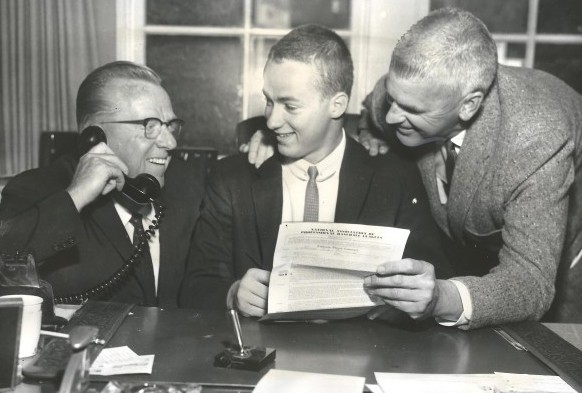
Roosevelt High School dates to 1921-22 and is named after former President Theodore Roosevelt, whose famous military regiment, the Rough Riders, gave the school its nickname. From then until now, Roosevelt has ranked among the most important secondary education/athletic institutions in the Seattle area, a segue into the exercise at hand.
In its series of periodic looks at Seattle-area high schools, Wayback Machine is attempting to identify the most significant athletic figure in Roosevelt High’s storied history (see Wayback Machine: The Best Of Franklin High and The Best of Garfield High).
As with Franklin and Garfield, the individual might be an athlete, coach, administrator, mover-and-shaker at large, or even a sports journalist. The only qualifier: the school must boast at least a half-dozen distinguished sports graduates among its population of outstanding alums.

Roosevelt has dispatched an impressive array of same into the world, including prominent musical talents Mike McCready (Pearl Jam), Duff McKagan (Guns N’ Roses), Nikki Sixx (Motley Crue), Jim Matheos (Fates Warning), rapper Sir Mix-A-Lot, and a pair of Nobel Prize winners in Robert Lucas (1995, Economics) and Linda Brown Buck (2004, Medicine).
Richard Karn, famous for his role on Home Improvement and his tenure as host of Family Feud, attended Roosevelt, as did Howard Duff, who didn’t have the stuff to make the school’s basketball team, but romanced Ida Lupino and Ava Gardner and, from 1947-90, appeared in hundreds of films and TV shows, including Kramer vs. Kramer, Bonanza, Twilight Zone and The Rockford Files.
Former Senator and Governor Dan Evans is a Roosevelt alum, as is Chris Hansen, the hedge fund investor who is attempting to build a basketball/hockey arena and lure the NBA back to Seattle.
Roosevelt’s rich sports tradition really started to emerge in the 1940s with the arrival of Bob Jorgensen and K Chorlton. Since then, the basketball and baseball programs have especially flourished. The boys’ basketball team has won three state championships; in 1946, 1973 and 1982 and was second in 1965 and 1987. The Teddies most recently appeared in the state playoffs in 2009.
Listed alphabetically, the following are the most decorated Roosevelt alums whose careers were largely, if not entirely, sports-based. At the end of this Wayback Machine, we’d like you to submit your choice for the most prominent and then leave a comment explaining your reasoning.
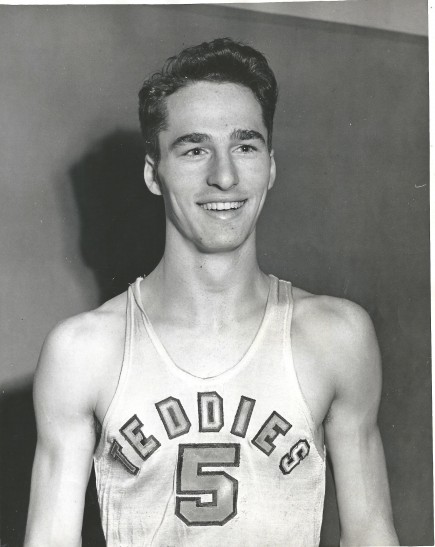
K Chorlton (Football, Basketball, Baseball): A little more than a decade ago, The Seattle Post-Intelligencer selected Chorlton, he of the distinctive, single-initial first name, as Roosevelt’s all-time greatest athlete. The newspaper had ample reason. Back in the mid-1940s, Chorlton did it all for the Rough Riders, starring primarily in basketball and baseball and making All-Metro and All-State in both, multiple times.
As a 15-year-old sophomore pitcher in 1944, Chorlton made his Roosevelt debut by throwing a no-hitter against Cleveland, fanning 14. A year later, he threw another no-hitter and pitched the Teddies to the city championship. In 1946, Chorlton led Roosevelt to a 17-0 record and the state basketball title.
The New York Yankees, New York Giants, St. Louis Browns, Washington Senators and Detroit Tigers all tried to sign Chorlton to a baseball contract, but he opted to enroll at the University of Washington, where he played baseball and basketball through his junior year before signing with the Seattle Rainiers for a $10,000 bonus.
Chorlton spent six seasons in the minor leagues, notably with Vancouver of the Western International League. He finished his career as an outfielder with a .303 batting average and was the subject of this Wayback Machine: Roosevelt Legend K Chorlton.
Bo Cornell (Football): Following his Roosevelt career, Cornell produced an outstanding three seasons at the University of Washington after seriously considering both the Air Force Academy (failed to pass the physical) and Stanford (signed a letter of intent).
At the UW (1968-70) under head coach Jim Owens, Cornell played for two bad teams and one good one, but was consistent throughout. During his three seasons, he scored 20 touchdowns and rushed for 1,250 yards, leading the Huskies in both the 1969 and 1970 seasons.
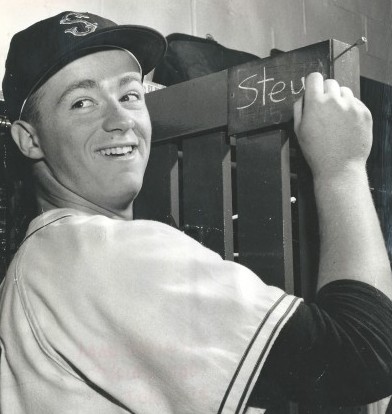
Although UW went 1-9 in 1969, Cornell lost just three yards while rushing for 613 in a wishbone offense. Demonstrating his versatility, he caught 33 passes as a senior in 1970 when the Huskies switched to a passing game with the arrival of quarterback Sonny Sixkiller.
Honorable Mention All-America in 1970, Cornell played seven seasons in the National Football League with the Cleveland Browns and Buffalo Bills. He totaled 96 games, including 12 starts.
Jim Coshow (Football, Basketball, Baseball): A 1952 Roosevelt graduate, Coshow earned three letters in basketball while playing under Tippy Dye at the University of Washington from 1953-56. He had his best season as a senior in 1955-56 when he averaged 12.0 points and 7.0 rebounds.
Coshow played one of his more memorable games Dec. 27, 1955 when, against Idaho, he pulled down 22 rebounds, still tied for the fourth-highest, single-game total in school history.
In addition to playing for the Huskies, Coshow had a significant amateur career. He played on the 1956 AAU champion Buchan Bakers and for the 1957 Air Force All-Star team that won the AAU championship in Denver.
James Edwards (Basketball): From Roosevelt, the seven-foot Edwards went on to an All-America career at the University of Washington. He also made All-West Coast (1977), twice was named All-Pac-8 (1976-77), and finished his career with 1,548 points and 792 rebounds.
Selected by the Los Angeles Lakers in the third round of the 1977 NBA draft, Edwards had the longest pro career of any state-based athlete, 19 years (1977-96). During that time, Edwards played for eight teams, averaging 12.7 points.
Although he never played in an NBA All-Star Game, Edwards was a key contributor to the 1989 and 1990 Detroit Pistons championship teams and won a third ring in the final season of his career, with the 1996 Chicago Bulls.
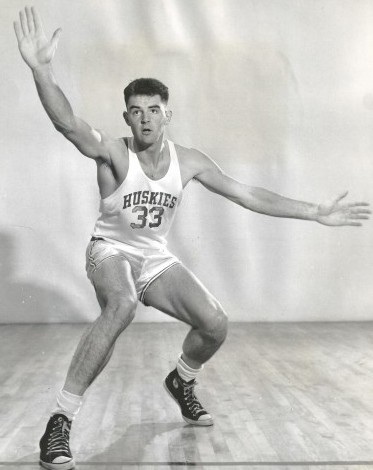
Edwards retired with 14,862 points and 6,004 rebounds. He is a member of the Husky Hall of Fame.
Lee Folkins (Football): A native of Wallace, ID., and a member of two Rose Bowl-winning teams at Washington (1960-61) after graduating from Roosevelt, Folkins entered the NFL via the 1961 draft (sixth round) and, after receiving an engineering degree, enjoyed a five-year career with the Green Bay Packers, Dallas Cowboys and Pittsburgh Steelers.
He was part of the Packers’ 1961 championship team (played tight end behind All-Pro Ron Kramer, backed up Max McGee at split end and Boyd Dowler and flanker, and played special teams) and earned a Pro Bowl invitation in 1963 when, with Dallas, he caught 31 passes for 407 yards and four touchdowns in 13 games.
Folkins finished his 64-game NFL career with 80 catches for 1,042 yards and 10 touchdowns, including a career-long 25-yarder from Don Meredith against Pittsburgh Oct. 27, 1963.
Folkins led Washington in receiving in 1959 and had the year’s longest catch in 1960, a 48-yard touchdown from Bob Hivner against Pacific.
Following his football career, Folkins returned to the Dallas area and became involved in the construction industry. He managed a variety of projects in such diverse locales as Oklahoma, Saudi Arabia, Indonesia, Orlando, the West Indies, Mexico and Tampa.
Bob Jorgensen (Basketball, Baseball): An all-city basketball player and a second-team, all-conference pitcher and running back for Roosevelt in the mid-1940s, Jorgensen became a local athletic celebrity when he emerged as the winning pitcher for the Rough Riders against Queen Anne in a seven-inning, double no-hitter.
Not only did Jorgensen throw a no-hitter, he scored the winning run in the 1-0 game by reaching on an error, stealing second and scoring when the Queen Anne first baseman dropped a pop up.
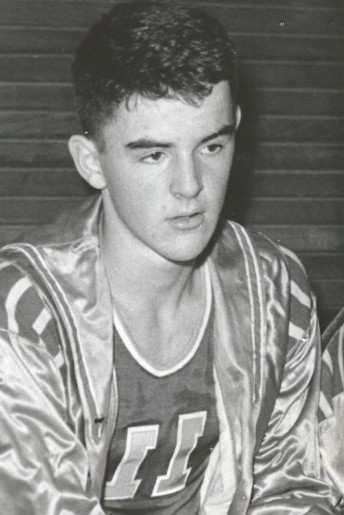
Jorgensen went on to sporting glory at the UW. As a freshman point guard permitted to play during World War II, he led the Husky basketball team in scoring (11.3 points per game), was voted the team’s most inspirational player and named All-Pacific Coast Conference.
Jorgensen lettered in each of the next three seasons in both basketball and baseball. As a junior guard, he had his next-most productive season, averaging 10 points and receiving All-Coast honorable mention honors. He played in the 1948 NCAA Tournament.
Steve Looney (Basketball, Baseball): Twice named All-Metro in basketball while at Roosevelt, Looney was recruited by several West Coast colleges, including Washington and UCLA. But he elected to attend Seattle U., attracted by its wide-open style of play.
During three varsity seasons, Looney averaged 11.6, 11.6 and 12.9 points and was on the court for the Chieftains March 5 1966, when Seattle U. scored a rousing 74-72 upset of previously undefeated Texas Western, the only stumble for the first collegiate team using an all-black starting lineup to claim an NCAA basketball title.
A sophomore at the time, Looney scored 13 points against the 28-1 Miners.
Looney played one year of pro basketball in France. He returned to Seattle and became a successful real estate entrepreneur.
Hugh Millen (Football): After leaving Roosevelt, Millen attended Santa Rosa (CA.) Junior College and then transferred to Washington, where he started for two years, throwing for 2,657 yards and 12 touchdowns. One of his biggest, a 73-yarder to Mark Pattison, led to a 1984 upset of Michigan in Ann Arbor. Another, a 12-yarder to Pattison, helped the Huskies beat Oklahoma in the 1985 Orange Bowl and secure a No. 2 national ranking.
Millen joined the Los Angeles Rams as a third-round draft choice and had a 10-year career in the NFL with the Rams (1987), Falcons (1988-90), Cowboys (1993), Broncos (1994-95) and Saints (1996).

Millen, who threw 22 touchdown passes in his pro career, is a successful football radio and television analyst in Seattle, specializing in Huskies and Seahawks commentary.
Mark Pattison (Football): Pattison caught 14 touchdown passes as a Roosevelt junior, and then became the the school’s starting quarterback in his senior season when the other QB candidate, Millen, proved not quite ready to run the team. Running an option attack, Pattison ran for seven TDs and passed for four more, earning All-Metro recognition.
At the University of Washington, Pattison developed into one of the best big-play receivers ever to work under head coach Don James. He caught 62 passes during his Husky career, three that remain especially memorable.
Pattison scored his first UW touchdown in 1983 in a 25-24 victory over Michigan at Husky Stadium, setting up a game-winning two-point conversion in the final minute. In 1984, at Ann Arbor, he caught a 73-yard TD from Millen in a 20-11 upset of Michigan. And in the 1985 Orange Bowl against Oklahoma, he caught a 12-yard, game-winning touchdown from Millen.
A seventh-round draft pick by the Raiders, Pattison also played for the Rams and Saints during a two-year NFL career.
Stew MacDonald (Football, Basketball, Baseball): Back in the late 1950s, MacDonald pretty much did it all for Roosevelt’s athletic teams. In football, he played quarterback, linebacker, safety, nose guard and punter. He also starred on the school’s basketball team.
But it was his ability as a pitcher that attracted professional scouts. In 1961, he became Seattle’s first “bonus baby” when he signed with the Boston Red Sox for $100,000.
The Red Sox assigned MacDonald to their AAA affiliate, the Seattle Rainiers, and he pitched for the club in three different seasons (1961-62, 1964). In all, he played six minor league years before injuries and an automobile accident derailed his athletic career.
Charlie Sells (Football, Basketball, Track): A gifted all-around athlete, Sells led the Rough Riders’ basketball team to the 1958 state tournament title and held the state mark in the high jump for several years (cleared 6-4). Although many of his Roosevelt teammates opted to attend Washington, Sells elected to matriculate to Washington State due to his affection for basketball coach Marv Harshman.
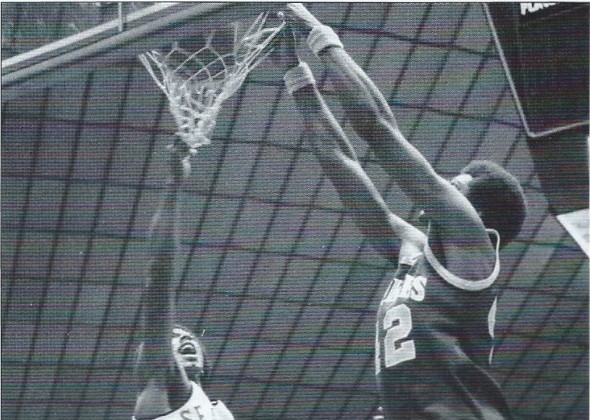
Sells originally became a professional with the American Basketball League’s Hawaii Chiefs, but after the ABL, owned by Globetrotters founder Abe Saperstein, folded, he received an invitation to try out for the Dallas Cowboys, even though he hadn’t played football at WSU.
Sells impressed enough in Dallas’ training camp that he was on the verge of making the team until Saperstein reorganized the ABL and demanded that Sells fulfill his original contract obligations. After the second incarnation of the ABL folded, Sells returned to Seattle even though he had a chance to play for the NBA’s Lakers.
Sells made All-City in football, basketball and track and honorable mention All-State in basketball. In 2008, the Rough Riders enshrined Sells into the Roosevelt Hall of Fame. After his athletic career, Sells worked in the steel industry.
Brett Smith (Football, Basketball): Smith co-captained the Rough Riders’ 1982 Class AAA state title-winning basketball team. As a walk-on wide receiver, he won two football letters at the University of Washington (1984, 1985), where he also earned a degree in English. Smith’s brothers, Chris and Shannon, also were UW football lettermen.
Smith did not play professionally, opting to become a high school coach and a Seattle police officer.
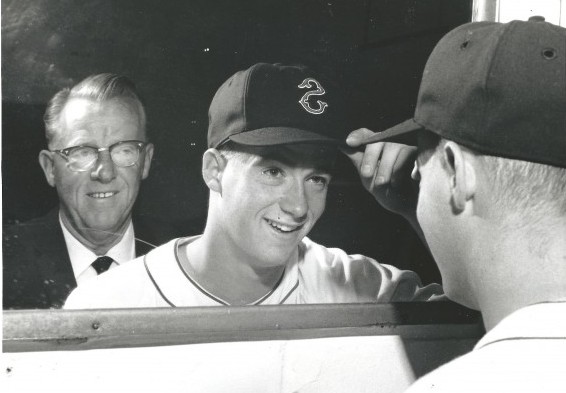
Tom Turnure (Football): After leaving Roosevelt, Turnure became a four-year letterman under Don James (1976-79) and Washington’s starting center in 1978 and 1979. He won the L. Walt Rising Award in 1979 (UW lineman of year) and represented the Huskies in the East-West Shrine Game and Japan Bowl.
Turnure went to the Detroit Lions with the 57th overall pick in the 1980 NFL draft and spent six seasons, playing in 63 games.
Marcus Williams (Basketball): Williams played at the University of Arizona following his Roosevelt graduation. He spent two years with the Wildcats, during which he made the Pac-10’s All-Freshman team and first-team All-Pac-10 (2006-07).
The 6-foot-7 small forward bounced around during his professional career. A second-round draft pick by San Antonio Spurs in 2007, he had two stints with the Spurs (2007, 2009), played a season with the Los Angeles Clippers, spent time in the D-League and in China’s professional league.
Lindsay Wilson (Basketball): Wilson sealed her Roosevelt legend in a game against Lake Washington. Matched against Catherine Kraayeveld, a future Oregon star, Wilson dropped in 43 points and the game winner at the buzzer.
Not heavily recruited, Wilson found a taker in Iowa State and enjoyed an outstanding four-year career during which the 5-foot-9 point guard became the school’s all-time assists leader, an All-American and a Naismith Award candidate.
Following college, Wilson had a long professional career, primarily in Greece.
—————————————–
[polldaddy poll=7420275]
Many of the historic images published on Sportspress Northwest are provided by resident Northwest sports history aficionado David Eskenazi. Check out David’s Wayback Machine Archive. David can be reached at (206) 441-1900, or at seattlesportshistory@gmail.com

3 Comments
Got to see Stew MacDonald’s pro debut, an exhibition vs. Boston Red Sox. It was also, I believe, Ted Williams final season and tho he didn’t play, he was there to enjoy the worship of the sell-out crowd. Don’t recall how Stew did in that game but he was the first local athlete whom I related to and perhaps one day, could emulate. I was 13 at the time and he wasn’t a whole lot older. (Although I knew of Ron Santo, I didn’t get to see him play, and that seems to be the determining factor.)
Didn’t Hugh Millen also play for the Patriots in 1991-1992?
Nice article. When I attended Roosevelt (1965-1968) I didn’t pay much attention to sports, but it’s fun to read about these great athletes today. And hey, I knew Bo Cornell’s girlfriend back in the day!